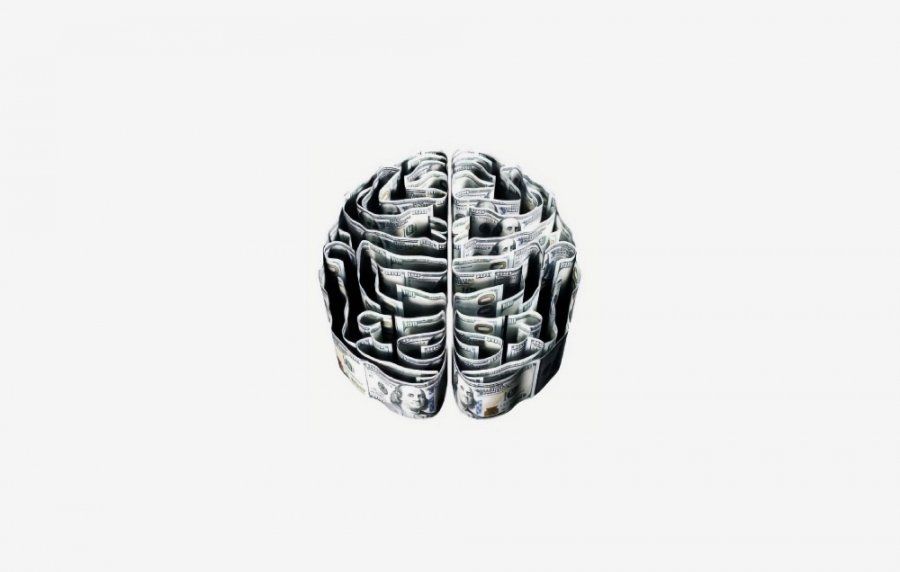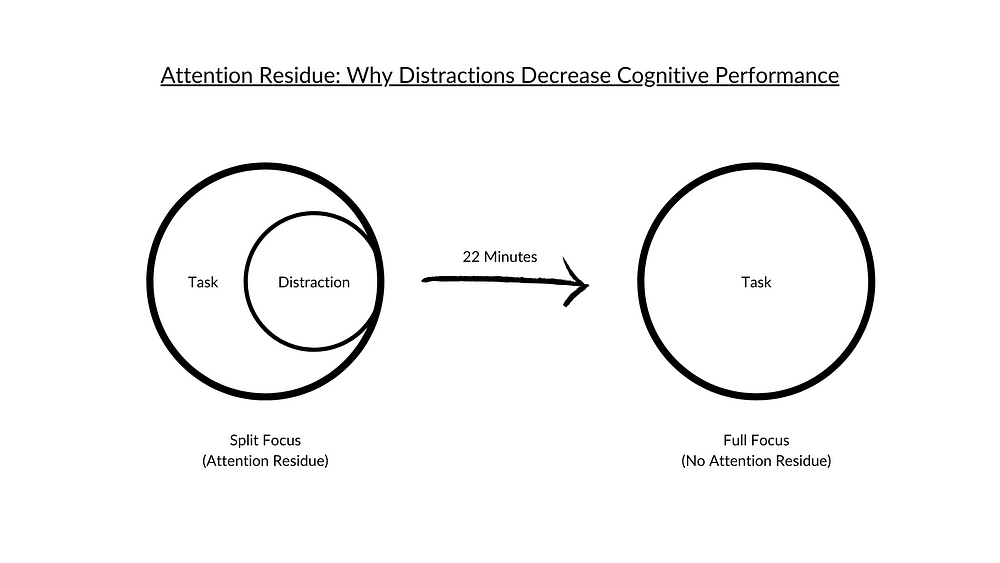
Work in a flow state for 2+ hours per day using the "3c method". Por Jari Roomer
How to access the zone of optimal mental performance that boosts productivity by 500%
Flow is a psychological and physiological state of peak performance. It’s where we feel our best and perform at our best — both mentally and physically. Some people refer to it as ‘being in the zone’, ‘hyperfocus,’ or ‘full immersion.’
It’s that state in which you are one with an activity or challenge, and nothing else seems to occupy your mind. Your sense of time gets distorted, you’re deeply concentrated in the ‘now,’ and feelings of hunger, pain, or fatigue might even fade away.
THE FLOW STATE IS A MODERN-DAY SUPERPOWER
Operating in a flow state is common for athletes, musicians, painters, and other creatives. Nevertheless, it’s extremely valuable for knowledge workers, entrepreneurs, students, and researchers as well. For me, as a writer on productivity and peak performance, this is the most interesting part.
Steven Kotler, the author of The Art of Impossible, says that during flow, “mental and physical ability go through the roof, and the brain takes in more information per second, processing it more deeply.”

A 10-year McKinsey study on flow and productivity found that top executives are five times more productive during flow. That’s a 500% increase in productivity.
This means that if, for the entire week, you spend 2 hours per day in a flow state, you’ll get as much done as most people do in an average 40-hour workweek.
In fact, according to these same McKinsey researchers, if you’d increase the time spend in flow by just 15–20%, overall productivity would almost double. In other words, in today’s knowledge economy, learning to harness the power of flow is a true superpower.
Whether you’re coding, writing, studying, or thinking, flow allows you to be more productive, create higher-quality work, and complete your tasks much faster. When you utilize flow states, you don’t need to work harder or longer — you’re working smarter.
This is why Steve Jobs designed Apple’s workspaces to optimize flow, why Richard Branson said he can ‘accomplish tremendous things in two hours of flow,’ and why Isaac Newton wrote his Principia Mathematica while in a flow state. It’s the zone of optimal mental performance — the ‘genius’ zone.
YOUR BRAIN IN A FLOW STATE
Research has shown that, in a flow state, your brainwave activity measurably changes. The brain shifts from high Beta wave activity (normal, waking consciousness) to the slower waves on the Alpha/Theta borderline.
During Alpha waves (8 to 12 Hz), the brain is calm yet alert. This is where new information is absorbed efficiently, and you are fully focused on the ‘now.’ This state is usually accessed through meditation.
During Theta waves (3 to 8 Hz), the brain is in a ‘dream’ state — that zone between being awake and asleep. When in Theta waves, optimal learning, memory, and intuition takes place. This state can also be accessed through deep meditation.
Aside from changes in brain wave activity, flow also produces a potent shift in neurochemistry. It appears that during a flow state, a combination of norepinephrine, dopamine, endorphins, anandamide, serotonin, and — sometimes — oxytocin floods the system.
As Steven Kotler said, “Motivationally, these five chemicals are the biggest rewards the brain can produce, and flow is one of the only times the brain produces all five simultaneously. This makes the state one of the most pleasurable, meaningful and — literally — addictive experiences available.”
MOST PEOPLE SPEND JUST 5% OF THEIR WEEK IN FLOW
One thing is clear; Operating in a flow state is incredibly powerful. It facilitates deep concentration, faster processing of information, and you reach maximum mental capacity. It’s the gateway to peak performance.
Nevertheless, despite its power, flow is quite rare nowadays. The 10-year McKinsey study mentioned earlier has shown that most knowledge workers spend only 5% of their working hours in a state of flow.
This means that 95% of the time (38 hours in a 40-hour workweek), most people operate at a lower performance level.

INFORMATION & DISTRACTION OVERLOAD
The primary reason why so little time is spent in this peak performance state is that, nowadays, information overload and distractions are more abundant than ever before.
One study by RescueTime has shown that the average knowledge worker gets distracted every 6 to 8.5 minutes by their smartphone or email notifications.
In other words, the constant stream of interruptions from our smartphones, messaging apps, email, notifications, and even other people are preventing us from getting — and staying — into a flow state.
This is truly problematic. A study by Microsoft found that since the year 2000, the average attention span dropped by 33%. No wonder so many people struggle with getting things done.
Working in a flow state requires a distraction-free environment. So, turn your notifications off, put your phone out of sight, close your social media and email tabs, and put on your noise-canceling headphones. If you want to reach peak levels of mental performance, you need to be disciplined about this.
DEEP FOCUS REQUIRES A LOT OF MENTAL ENERGY
On top of the information overload and abundance of distractions, so little time is spent in a flow state because operating at maximum mental capacity is energy-draining.
This is why it’s critical to do your flow state work when your mental energy levels are at their peak. For most people, this would be early in the day.
Yet, most people fill their morning with email, meetings, distractions, and other low-value tasks that would be better to handle in the afternoon. When you’ve already performed dozens of trivial tasks, the brain has depleted the energy necessary for deep focus & concentration — making flow state work nearly impossible.
Therefore, my personal rule is that the morning is for making, and the afternoon is for managing. Every morning, I protect 2–3 hours for deep, flow state work on my highest-priority task of the day (writing, working on products, marketing). As this is my peak productivity time, I protect it at all costs.
Then, I use the afternoon for managing-type tasks such as email, meetings, and other administrative work that requires less mental energy and focus. This rule has been a game-changer to my productivity.
THE 3C METHOD FOR ‘HACKING’ THE FLOW STATE
After years of experimenting with different neuroscience-based strategies to ‘hack’ the flow state, I’ve developed a formula that helps you reach this state of maximum performance with great predictability.
I call this the ‘3C Method’, and it stands for:
- Create a Distraction-Free Environment
- Control The ‘Monkey’ Mind
- Cognitive Optimization
CREATE A DISTRACTION-FREE ENVIRONMENT
Distractions are the number one enemy of flow. Each distraction — whether from your smartphone, email, notifications, or social media — leads to ‘attention residue.’
Attention residue means that some of your attention is left behind at the previous distraction your brain was dealing with. According to research, this attention residue lasts about 22 minutes. This means that, for 22 minutes, you’re operating with impaired cognitive performance — a lower-performing brain.

In other words, the brain can’t shift from a distraction to a task without some form of a penalty, which we call ‘switching costs.’ These switching costs tend to decrease productivity by 40% per day as they block you from entering a deep state of concentration or flow.
Therefore, you need to create a distraction-free environment if you want to enter — and sustain — a deep state of flow. The moment you starve your distractions, you feed your focus.
To create an optimal distraction-free environment that allows a deep, prolonged state of flow, I recommend you do the following:
- Turn email, smartphone, and other notifications off
- Put your smartphone out of sight
- Close all unrelated internet tabs (especially email and social media websites)
- Let your colleagues/family know when your focus hours are (and when you are available for their requests again)
(Note that these actions don’t have to be done for the entire day, but simply for the hours where you want to work in a state of deep concentration and flow.)
CONTROL THE ‘MONKEY’ MIND
Now that we’ve eliminated external distractions from email, social media, smartphones, and messaging apps, it’s time to handle internal distractions.
You see, our external environment can be free of distractions, but our internal environment (the mind) can still be distracting us through all kinds of thoughts, worries, and ideas.
In Buddhism, there is a principle that describes a racing, uncontrolled mind as a ‘monkey mind.’ Just like a monkey swinging from tree to tree, our mind is continuously swinging from thought to thought and from worry to worry.
According to a Harvard study, 47% of our days are spent with a wandering ‘monkey’ mind. It’s important to control this monkey mind because an untrained monkey mind leads to mental fatigue, making it nearly impossible to work in a deep state of concentration and flow.
To control the monkey mind, I recommend the following actions:
- Take regular breaks to recharge your mental batteries (a tired brain is a distracted brain)
- Limit the amount of information you consume (from social media, the news, email, your smartphone, etc.) on a daily basis to keep reactive, racing thoughts at a minimum
- When working in deep focus, keep a notebook next to you to capture ‘pop-up’ thoughts, ideas, or to-dos. Remember, your mind shouldn’t be a storage place for thoughts and ideas; it should be a generator of high-quality thoughts and ideas
- Limit excessive sugar or caffeine consumption as it leads to a busy, uncontrolled mind
- Build the habit of daily meditation, as it helps you keep a focused, controlled mind (see this scientific study)
- Write daily in a journal to jot down your most dominant thoughts, ideas, or stresses (once it’s onto paper, it’s out of your mind)
COGNITIVE OPTIMIZATION
Now that you’ve created the optimal internal and external distraction-free environment that facilitates a deep flow state, we’ll move to cognitive optimization.
Basically, cognitive optimization means boosting your cognitive performance through a range of different actions based on neuroscience. These cognitive boosters give you the extra mental ‘edge’ so you’ll experience the deepest flow and reach maximum cognitive performance.
These are the actions I recommend you take to optimize your cognitive performance:
- Make use of your Peak Energ Time, which is the natural time in the day in which you are most mentally sharp, focused, and productive. According to research, this is the morning for most people. That’s when willpower tends to be highest, and mental energy levels haven’t been depleted yet.
- Listen to a specifically designed focus playlist to boost your focus (see this study for the scientific benefits)
- Strategically consume caffeine as it can boost your cognitive performance. It’s important not to go overboard here, as too much coffee (more than 2 cups) can lead to increased anxiety, decreased focus, and negative effects on sleep quality. For me, 1–2 cups seems to be the sweet spot.
- Drink enough water throughout the day to prevent brain fog from disrupting your cognitive performance. Most people go through their day in a constant state of dehydration and brain fog.
- Create the optimal ‘cognitive load’ by working on tasks that are challenging enough to stretch your skills to the limit, but not too difficult that it becomes frustrating. This keeps your brain fully engaged and absorbed in the task at hand.
NOW DO IT
The flow state is one of the modern-day superpowers. In a world where most people are continuously distracted, learning to access this peak performance state can be a great competitive edge.
Now, the most important thing is to take action on this knowledge. It’s not enough to just know about it; you actually have to put in the effort to get in a flow state as often as possible.
Fuente:
https://medium.com/better-advice/work-in-a-flow-state-for-2-hours-per-day-using-the-3c-method-3ffab28ee9e1

